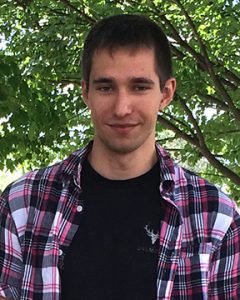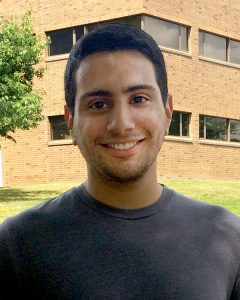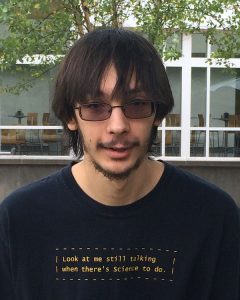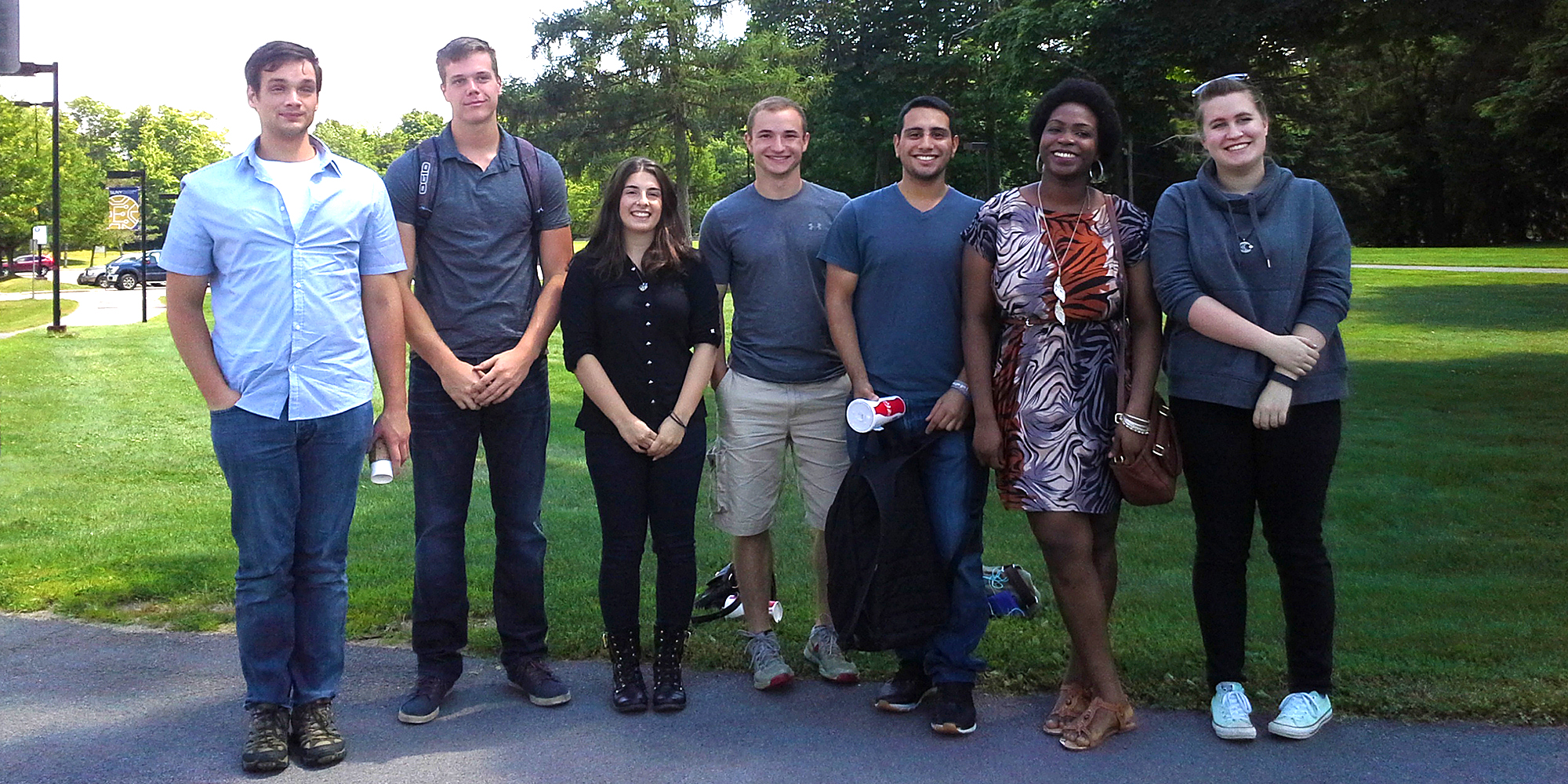Computational Boot Camp ’15 & the SUNY STEM Passport Program
A dozen students from SUNY Poly, SUNY Poly’s CNSE, Stony Brook University, SUNY Buffalo, and University of Albany convened at SUNY Polytechnic Institute in Utica this summer for a boot camp unlike any other.
The two-week computational boot camp, led by SUNY Poly faculty members Andrea Dziubek, Edmond Rusjan, and William Thistleton, guided students through a series of exercises in high-level calculus and computational methods. In an intentionally fun, hands-on, and intimate setting, the engineering, computer science, and applied mathematics students gained not only knowledge fundamental to their field of study but also new friends and close faculty mentors.
Several students who participated in the Computational Boot Camp, as well as the SUNY STEM Research Passport program (a ten-week research opportunity for undergrads under the guidance of a faculty mentor), shared their experiences of this rare opportunity.
 Misha Yermakov, Nanoscale Engineering ’18
Misha Yermakov, Nanoscale Engineering ’18
Misha, a sophomore at SUNY Poly CNSE, participated in the boot camp as well as the research project titled Geometry and Symmetry based Mathematical and Computational Methods for Partial Differential Equations, led by faculty member Andrea Dziubek.
The research focused on comparing discrete exterior calculus and finite elements for some toy examples, understanding the discrete divergence operator and other operators of the basic equations of fluids, mechanics, and electromagnetism, and implementing discrete exterior calculus routines for problems on curved surfaces.
Misha says the goal was to learn more about mathematics.
“I feel like I had a year of mathematics,” he said when reflecting on his experience. “Last summer I worked on a project at SUNY Poly CNSE that was more quantitative. I tried to read some of the related papers but they were all about partial differential equations and I could not understand them. Now I can try to read them.”
He went on to explain numerical methods, how to approach initial value problems, and boundary value problems. Working as a student researcher for Geometry and Symmetry based Mathematical and Computational Methods for Partial Differential Equations, Misha does admit he was a little nervous at first.
“Andrea was my first choice (for a research project) but I was a little scared about living up to her expectations.”
Misha took hold of that fear, turning it into adrenaline and ambition that allowed him to truly enjoy challenging himself during the project.
 Ariel Ordonez, SUNY Buffalo ’17
Ariel Ordonez, SUNY Buffalo ’17
A student at SUNY Buffalo, Ariel participated in the boot camp as well as the research project titled Mathematical Modeling of Blood Flow in the Retina of the Eye, lead by Edmond Rusjan.
The research focused on the development, analysis and verification of mathematical models as it relates to blood flow in the retina of the eye. The impact of such research is vast, with the potential to advance our understanding of various eye pathologies and help improve existing treatments and discover new treatments.
Ariel says he initially applied for Rusjan’s SUNY STEM Research Passport project because he wanted to get away during the summer. Initially thinking he would “just give it a try,” Ariel soon found himself amid what he calls an incredible summer experience.
His research project included looking into the PyDEC Python Package and trying to get a basic foundation. He had to understand how to manipulate the program and the “simplicial complex,” a topological space of a certain kind, constructed by “gluing together” points, line segments, triangles, and their n-dimensional counterparts.
“Leaving the program, I gained friends and I ended up doubling into Calculus III and Differential Equations and into Partial Differential Equations,” he said. “I gained a lot of intuition for higher mathematics and I believe I gained a lot of discipline.”
The incredibly positive experience Ariel had during his SUNY STEM Research Passport project has left him hoping for the chance to take part in another such program next year. He encourages freshmen and sophomores to participate as well.
“Read through every description because you may find something that interests you, and you may have the qualifications.”
Paul Lastowicka, Applied Mathematics & Computer Science ’15
As a recent SUNY Poly graduate and double major in applied mathematics and computer science, Paul was able to assist faculty with the Computational Boot Camp, helping while also learning more about numerical mathematics, an important interest for his graduate studies.
During the Boot Camp, Paul dove head first into FEniCS and finite element software, learning about solving beams. His biggest takeaway from the Boot Camp, Paul says, was finite elements, how to do it in higher order, as well as making new friends.
“The faculty is great! You actually learn things, the courses are pretty diverse and it is a smaller school so you know the professors.”
Daniel Yaciuk, Applied Mathematics & Civil Engineering Technology ’14
Daniel, also a recent SUNY Poly graduate, double majored in applied mathematics and civil engineering technology.
He assisted with the Computational Boot Camp and research projects, gaining experience writing research papers using Latex, a word-processing program specifically for research papers. His mind was also opened up, he says, to concepts of physics and math he had never been exposed to before.
Anvesh Mateti, Nanoscale Engineering ’18
Anvesh Mateti, a sophomore from SUNY Poly CNSE, liked the Boot Camp so much that he decided to join our summer research activities and to work with us (at his own expense).
More about the SUNY STEM Research Passport Program
The SUNY STEM Research Passport Program provides undergraduate students from across the SUNY system with ten-week research opportunities in which they perform research under the guidance of a SUNY faculty mentor.
SUNY Poly faculty members participating in the 2015 SUNY STEM Research Passport:
- Cloud Security Research, Ronny Bull (Computer Science)
- Geometry and Symmetry based Mathematical and Computational Methods for Partial Differential Equations, Andrea Dziubek (Math & Physics)
- Investigation of Machining Dynamics using Continuation Analysis, Frias Khasawne (Mechanical Engineering)
- Mathematical Modeling of Blood Flow in the Retina of the Eye, Edmond Rusjan (Math & Physics)
- Cytochrome P450, Narayan Sharma (Biology & Chemistry)
- Detection and Quantification of Nanoparticles in Industrial Wastewater, Xinchao Wei (Civil Engineering)
- Image Processing in Vision Science, William Thistleton, (Math & Physics)
